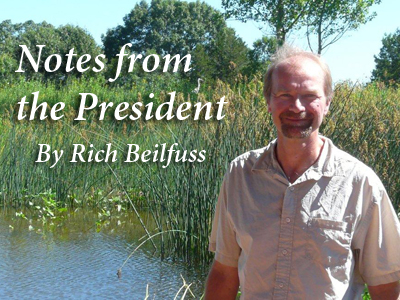Fall 2012: Cranes and Sustainable Energy
This update is reprinted from the November 2012 issue of The ICF Bugle
 When I think about the conservation challenges we face in the coming century, my thoughts invariably turn to food, water, and energy. How will we feed 9 billion people and still maintain healthy landscapes for cranes and other life we hold dear? How will we water thirsty cities and farmlands without sacrificing life-supporting rivers and wetlands? Can we meet the global demand for electricity without devastating our land, water, air…and climate?
When I think about the conservation challenges we face in the coming century, my thoughts invariably turn to food, water, and energy. How will we feed 9 billion people and still maintain healthy landscapes for cranes and other life we hold dear? How will we water thirsty cities and farmlands without sacrificing life-supporting rivers and wetlands? Can we meet the global demand for electricity without devastating our land, water, air…and climate?
We write and speak often about the role of cranes as flagships for sustainable water management, and the unique challenges of crane conservation on agricultural landscapes. The connections between cranes and energy – including its distribution, production, and exploration – are equally strong, but perhaps not as well-known.
In recent years, overhead power distribution lines have emerged as a serious threat to cranes and many other species worldwide. Cranes are vulnerable to power line collisions when flying in and out of wetland roosting sites before dawn and after dusk (when the lines are hard to see, even with markers), and on staging grounds where cranes are less familiar with the landscape. Juvenile birds new to flight are especially prone to collisions. Where cranes congregate in huge numbers, such as on the Platte River in spring, these collisions can take a heavy toll.
We are working with partners across the globe to reduce the risk of power line collisions along crane flyways. A new ICF collaboration with the Northern Prairie Wildlife Research Center and The Crane Trust aims to reduce power line collisions and other risks in the central flyway for Sandhill and Whooping Cranes. Our partners in South Africa, the Endangered Wildlife Trust (EWT), developed an innovative program with their national power company, Eskom – they are relocating power lines from the highest-risk areas, ensuring the safer placement of new lines, and marking power line stretches that cranes traverse by day. Together with EWT, we aim to expand this program to influence power distribution systems and decision-making across Africa. Our colleagues in Bhutan carried this a step further, burying more than 30 miles of powerlines at great cost to eliminate the risk to their beloved Black-necked Cranes. These decisions benefit much more than cranes – millions of birds, including vultures, bustards, eagles, owls and other raptors are thought to die each year as a result of power line interactions.
At the source, where power is produced, cranes also inspire improved land stewardship. Our longterm collaboration with power companies on the Zambezi River is balancing hydropower production with downstream water requirements for cranes, other wildlife, and thousands of farmers and fishers negatively affected by river regulation. We also seek to understand and mitigate the impacts of “environmentally-friendly” sources of energy, such as wind turbines, that also could prove deadly for migrating cranes and other species.
Sustainable paths to energy exploration and mining remain a key conservation challenge. The procession of oil-laden barges through the coastal wintering grounds of Endangered Whooping Cranes in Texas is a constant reminder of the delicate balance between energy and biodiversity – a balance that was nearly tipped by the massive Gulf Coast oil spill of 2011. In South Africa, grasslands home to Blue, Wattled, and Grey Crowned Cranes are being developed at an alarming rate for coal and natural gas. Elsewhere in Africa, peatlands are being mined and destroyed to meet desperate, short-term energy needs.
Perhaps nowhere is there a starker trade-off between energy development and sustainable land use than on the tar sands of northwest Canada. Tar sands are mined for oil on a massive scale on the migratory route of the last naturally-occurring population of Whooping Cranes, one of the most heavily used flyways for waterbirds in North America. Last month, our colleagues at LightHawk flew over this devastated landscape and wrote a stunning exposé in WayPoint Flight Stories, Issue 68. Their stark photos depict a region that, in their words, is more reminiscent of Mordor, the mythical dark land in Tolkien’s Lord of the Rings, than the pristine boreal forests and wetlands of our mind’s eye. Of grave concern to cranes are the vast, lake-sized tailings ponds that are so toxic that most every waterbird that lands on them dies – nearly 1,600 ducks in one reported incident. Tribal groups living downstream are experiencing a spike in rare cancers, asthma, and diabetes. The strong link between tar sands development and global greenhouse gas emissions is widely criticized by climate scientists.
Cranes have often led us to better, more sustainable solutions for our land and water. I hope that public concern over the fate of Whooping Cranes, iconic symbols of recovery from the brink, will yet play a key role in finding a healthier path to our energy future.
